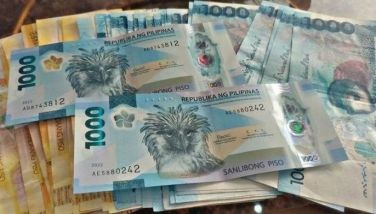More jobs in Japan seen for Filipinos
Tokyo, Japan – Filipinos are poised to secure more employment opportunities in the world’s third largest economy as the backlog for laborers in Japan would likely result in the relaxation of hiring and entry requirements.
Japan plans to create special economic zones that would allow faster deployment of foreign workers involved in sectors like business innovation, medicine and agriculture, a long-time Philippine ambassador said.
Domingo L. Siason Jr., former Philippine ambassador to Japan and senior adviser of Metrobank, told visiting reporters that Japan plans to create special economic zones that would feature less stringent employment qualification standards to plug the need for doctors, nurses and construction workers.
“If they won’t do it, they would no longer have the manpower,†Siason said, adding that Japan, which is strict in visa requirements, might adopt the US model that facilitated the entry of Mexican workers.
Last week, the Japanese government laid out the locations of special strategic zones in line with Prime Minister Shinzo Abe’s goal of attracting investments and boosting competitiveness.
For instance, Tokyo was designated as an area for business innovation while the Kansai area surrounding Osaka could be developed as a medical hub. Niigata in northern Japan and Yabu in central Japan were tagged as agricultural zones, while
Fukuoka as a special labor zone and Okinawa is set to become an international tourism center.
The large investments and new businesses in the special economic zones provide opportunities for Filipinos to be employed in Japan, Siason said.
“In the Philippines, no matter what you do, you can’t create enough employment,†Siason said.
To date, there are around 200,000 Filipinos working in Japan, particularly in the sector of education and information technology. Filipinos are the third largest group in Japan, next to the Chinese and Brazilians.
On the bigger picture, Siason said the Philippines should take advantage of bilateral and multilateral trade deals.
“The importance of the Philippines-Japan Economic Partnership Agreement (PJEPA) is we train each other and we trade complementary products,†Siason said.
The Philippines, the former energy added, should also join the Trans-Pacific Partnership (TPP), a US-led free trade agreement targeted to open up the Asia-Pacific region.
Siason said ??? the TPP would allow the Philippines to secure its spot in the biggest market China while US would remain a big market for goods and services.
For its part, flagship carrier Philippine Airlines (PAL) is facilitating trade and tourism as it beefed up its flights to Japan.
On Sunday, PAL added its twice daily Manila-Haneda flights to its existing Tokyo-Narita, Fukuoka, Nagoya and Osaka routes. It marked the company’s return to Haneda Airport in Tokyo, which was PAL’s chief gateway in Japan for 29 years until 1978.
“With the return of international service to Haneda, PAL is now back at Tokyo’s premier airport,†said Ismael Augusto Gozon, senior vice-president for airline operations of PAL.
“This new route to Haneda directly links the residents of Tokyo to PAL’s hub here at Ninoy Aquino International Airport, (NAIA) where they can seamlessly connect to 28 points throughout the archipelago and to 35 cities across Asia, Australia,the Middle East, North America and Europe,†Gozon said.
Gozon said the interconnectivity among the domestic and international networks is one of PAL’s key competitive advantages, allowing it to offer a wide range of destinations and itineraries.
To date, PAL is the largest airline operating between the Philippines and Japan with 77 weekly frequencies between seven points – more than the combined flights of all other carriers in the market.
- Latest
- Trending





























